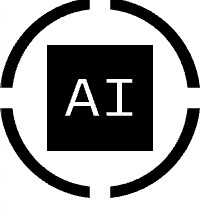Bitget:全球日交易量排名前 4!
BTC 市占率61.74%
Bitget 新幣上架 : Pi
BTC/USDT$103229.72 (-0.80%)恐懼與貪婪指數70(貪婪)
山寨季指數:0(比特幣季)
比特幣現貨 ETF 總淨流量:+$5.2M(1 天);+$1.6B(7 天)。Bitget 新用戶立享 6,200 USDT 歡迎禮包!立即領取
到 Bitget App 隨時隨地輕鬆交易!立即下載
Bitget:全球日交易量排名前 4!
BTC 市占率61.74%
Bitget 新幣上架 : Pi
BTC/USDT$103229.72 (-0.80%)恐懼與貪婪指數70(貪婪)
山寨季指數:0(比特幣季)
比特幣現貨 ETF 總淨流量:+$5.2M(1 天);+$1.6B(7 天)。Bitget 新用戶立享 6,200 USDT 歡迎禮包!立即領取
到 Bitget App 隨時隨地輕鬆交易!立即下載
Bitget:全球日交易量排名前 4!
BTC 市占率61.74%
Bitget 新幣上架 : Pi
BTC/USDT$103229.72 (-0.80%)恐懼與貪婪指數70(貪婪)
山寨季指數:0(比特幣季)
比特幣現貨 ETF 總淨流量:+$5.2M(1 天);+$1.6B(7 天)。Bitget 新用戶立享 6,200 USDT 歡迎禮包!立即領取
到 Bitget App 隨時隨地輕鬆交易!立即下載



Inter Milan Fan Token 價格INTER
上架
報價幣種:
TWD
NT$36.23+6.39%1D
價格圖表
TradingView
市值
Inter Milan Fan Token價格走勢圖 (INTER/TWD)
最近更新時間 2025-05-13 14:10:47(UTC+0)
市值:NT$324,572,930.65
完全稀釋市值:NT$324,572,930.65
24 小時交易額:NT$189,958,111.48
24 小時交易額/市值:58.52%
24 小時最高價:NT$37.05
24 小時最低價:NT$34
歷史最高價:NT$429.76
歷史最低價:NT$22.83
流通量:8,957,450 INTER
總發行量:
19,728,000INTER
流通率:45.00%
最大發行量:
--INTER
以 BTC 計價:0.{4}1148 BTC
以 ETH 計價:0.0004660 ETH
以 BTC 市值計價:
NT$7,000,906.99
以 ETH 市值計價:
NT$1,048,101.75
合約:
0x67e4...2B9078d(Chiliz)
更多
您今天對 Inter Milan Fan Token 感覺如何?
注意:此資訊僅供參考。
Inter Milan Fan Token (INTER) 簡介
了解足球俱樂部幣:揭開Inter Milan Fan Token的奧秘
以下我們將針對Inter Milan Fan Token的創新平臺在加密貨幣業界中的地位,使命與核心功能加以討論,並為你提供最寶貴的洞察。
Inter Milan Fan Token的歷史背景
Inter Milan Fan Token 是一種加密貨幣,專門為國際米蘭足球俱樂部的粉絲設計,旨在使球迷與他們所喜愛的足球俱樂部產生前所未有的互動。這種新型數位資產的推出標誌著足球和區塊鏈科技的重要融合,藉此實現新的粉絲參與模式。
Inter Milan Fan Token的特點
提升粉絲參與
Inter Milan Fan Token的設計初衷在於提升粉絲的參與度和賦權。持有這種Fan Token的粉絲有機會參加俱樂部的投票,對俱樂部的一些重要決定發表自己的觀點。這裡的投票主題可能包括新球衣的選擇、慈善活動的舉辦,甚至是陣容的調整。
獨家獎勵及體驗
持有Inter Milan Fan Token的用戶還有可能獲得一些獨家獎勵和體驗,例如親臨比賽現場、探訪更衣室等。足球俱樂部幣對粉絲的互動甚至可能延伸到虛擬現實技術,例如跟隨俱樂部進行虛擬遊覽。
結論
Inter Milan Fan Token的創新理念已經開創了足球及區塊鏈科技的新篇章,使粉絲和足球俱樂部之間創造了更緊密的聯繫。它證明了數位資產的力量,並以此為藍圖,描繪出加密貨幣領域未來的可能性。 然而,與任何新興技術一樣,它面臨許多挑戰和不確定性。作為視覺者或參與者,我們需要密切關注其發展動向,以確保我們能在瞬息萬變的數位世界中保持最前沿。
Inter Milan Fan Token 的 AI 分析報告
今日加密市場熱點查看報告
今日Inter Milan Fan Token即時價格TWD
今日 Inter Milan Fan Token 即時價格為 NT$36.23 TWD,目前市值為 NT$324.57M。過去 24 小時內,Inter Milan Fan Token 價格漲幅為 6.39%,24 小時交易量為 NT$189.96M。INTER/TWD(Inter Milan Fan Token 兌換 TWD)兌換率即時更新。
Inter Milan Fan Token價格歷史(TWD)
過去一年,Inter Milan Fan Token價格上漲了 -31.64%。在此期間,INTER兌TWD 的最高價格為 NT$102.7,INTER兌TWD 的最低價格為 NT$22.83。
時間漲跌幅(%) 最低價
最低價 最高價
最高價 
 最低價
最低價 最高價
最高價 
24h+6.39%NT$34NT$37.05
7d+8.13%NT$28.22NT$39.39
30d+42.29%NT$23.45NT$39.39
90d+41.30%NT$22.83NT$39.39
1y-31.64%NT$22.83NT$102.7
全部時間-83.72%NT$22.83(2025-04-07, 36 天前 )NT$429.76(2021-10-22, 3 年前 )
Inter Milan Fan Token的最高價格是多少?
Inter Milan Fan Token兌換TWD的歷史最高價(ATH)為 NT$429.76,發生於 2021-10-22。相較於價格回撤了 91.57%。
Inter Milan Fan Token的最低價格是多少?
Inter Milan Fan Token兌換TWD的歷史最低價(ATL)為 NT$22.83,發生於 2025-04-07。相較於Inter Milan Fan Token歷史最低價,目前Inter Milan Fan Token價格上漲了 58.73%。
Inter Milan Fan Token價格預測
INTER 在 2026 的價格是多少?
根據INTER的歷史價格表現預測模型,預計INTER的價格將在 2026 達到 NT$40.16。
INTER 在 2031 的價格是多少?
2031,INTER的價格預計將上漲 +26.00%。 到 2031 底,預計INTER的價格將達到 NT$91.82,累計投資報酬率為 +164.59%。
常見問題
Inter Milan Fan Token 的目前價格是多少?
Inter Milan Fan Token 的即時價格為 NT$36.23(INTER/TWD),目前市值為 NT$324,572,930.65 TWD。由於加密貨幣市場全天候不間斷交易,Inter Milan Fan Token 的價格經常波動。您可以在 Bitget 上查看 Inter Milan Fan Token 的市場價格及其歷史數據。
Inter Milan Fan Token 的 24 小時交易量是多少?
在最近 24 小時內,Inter Milan Fan Token 的交易量為 NT$189.96M。
Inter Milan Fan Token 的歷史最高價是多少?
Inter Milan Fan Token 的歷史最高價是 NT$429.76。這個歷史最高價是 Inter Milan Fan Token 自推出以來的最高價。
我可以在 Bitget 上購買 Inter Milan Fan Token 嗎?
可以,Inter Milan Fan Token 目前在 Bitget 的中心化交易平台上可用。如需更詳細的說明,請查看我們很有幫助的 如何購買 inter-milan-fan-token 指南。
我可以透過投資 Inter Milan Fan Token 獲得穩定的收入嗎?
當然,Bitget 推出了一個 機器人交易平台,其提供智能交易機器人,可以自動執行您的交易,幫您賺取收益。
我在哪裡能以最低的費用購買 Inter Milan Fan Token?
Bitget提供行業領先的交易費用和市場深度,以確保交易者能够從投資中獲利。 您可通過 Bitget 交易所交易。
Inter Milan Fan Token 資訊
Inter Milan Fan Token行情
Inter Milan Fan Token持幣分布集中度
巨鯨
投資者
散戶
Inter Milan Fan Token地址持有時長分布
長期持幣者
游資
交易者
coinInfo.name(12)即時價格表

全球Inter Milan Fan Token價格
目前Inter Milan Fan Token用其他貨幣計價是多少?最近更新時間:2025-05-13 14:10:47(UTC+0)
INTER 兌換 MXN
Mexican Peso
Mex$23.24INTER 兌換 GTQGuatemalan Quetzal
Q9.12INTER 兌換 CLPChilean Peso
CLP$1,124.1INTER 兌換 UGXUgandan Shilling
Sh4,339.06INTER 兌換 HNLHonduran Lempira
L30.71INTER 兌換 ZARSouth African Rand
R21.8INTER 兌換 TNDTunisian Dinar
د.ت3.61INTER 兌換 IQDIraqi Dinar
ع.د1,554.68INTER 兌換 TWDNew Taiwan Dollar
NT$36.21INTER 兌換 RSDSerbian Dinar
дин.125.43INTER 兌換 DOPDominican Peso
RD$69.82INTER 兌換 MYRMalaysian Ringgit
RM5.15INTER 兌換 GELGeorgian Lari
₾3.26INTER 兌換 UYUUruguayan Peso
$49.63INTER 兌換 MADMoroccan Dirham
د.م.11.09INTER 兌換 OMROmani Rial
ر.ع.0.46INTER 兌換 AZNAzerbaijani Manat
₼2.02INTER 兌換 KESKenyan Shilling
Sh153.57INTER 兌換 SEKSwedish Krona
kr11.57INTER 兌換 UAHUkrainian Hryvnia
₴49.25- 1
- 2
- 3
- 4
- 5
如何購買Inter Milan Fan Token(INTER)

建立您的免費 Bitget 帳戶
使用您的電子郵件地址/手機號碼在 Bitget 註冊,並建立強大的密碼以確保您的帳戶安全

認證您的帳戶
輸入您的個人資訊並上傳有效的身份照片進行身份認證

將 Inter Milan Fan Token 兌換為 INTER
在 Bitget 上選擇加密貨幣進行交易。
了解更多購買其他幣種
您可以在哪裡購買Inter Milan Fan Token(INTER)?
影片部分 - 快速認證、快速交易

如何在 Bitget 完成身分認證以防範詐騙
1. 登入您的 Bitget 帳戶。
2. 如果您是 Bitget 的新用戶,請觀看我們的教學,以了解如何建立帳戶。
3. 將滑鼠移到您的個人頭像上,點擊「未認證」,然後點擊「認證」。
4. 選擇您簽發的國家或地區和證件類型,然後根據指示進行操作。
5. 根據您的偏好,選擇「手機認證」或「電腦認證」。
6. 填寫您的詳細資訊,提交身分證影本,並拍攝一張自拍照。
7. 提交申請後,身分認證就完成了!
加密貨幣投資(包括透過 Bitget 線上購買 Inter Milan Fan Token)具有市場風險。Bitget 為您提供購買 Inter Milan Fan Token 的簡便方式,並且盡最大努力讓用戶充分了解我們在交易所提供的每種加密貨幣。但是,我們不對您購買 Inter Milan Fan Token 可能產生的結果負責。此頁面和其包含的任何資訊均不代表對任何特定加密貨幣的背書認可,任何價格數據均採集自公開互聯網,不被視為來自Bitget的買賣要約。
Inter Milan Fan Token評級
社群的平均評分
4.4
此內容僅供參考。
Bitget 觀點

Annyluv
2天前
The Future of $OBOL COIN in Web3 Gaming Ecosystems: Fueling In-Game Economies and Player Ownership
Introduction
The gaming industry is undergoing a significant transformation as Web3 technologies and blockchain integration become increasingly prominent. One of the most exciting developments in this space is the emergence of decentralized, player-driven economies powered by cryptocurrencies and NFTs (non-fungible tokens). In this evolving environment, utility tokens like $OBOL COIN have the potential to play a vital role, enabling seamless transactions, empowering players with true ownership of digital assets, and fostering new monetization opportunities within gaming ecosystems.
This analysis explores how $OBOL COIN could shape the future of Web3 gaming, fuel decentralized in-game economies, and redefine how players interact with and benefit from virtual worlds.
---
The Current State of Web3 Gaming
Web3 gaming, often called blockchain gaming, integrates decentralized technologies to give players greater control over their in-game assets, currencies, and data. Unlike traditional games where developers maintain centralized authority over all aspects of the game economy, Web3 games use smart contracts and tokenized economies to ensure fairness, transparency, and interoperability.
Key features of Web3 gaming:
True Digital Ownership: Players own their in-game assets (items, characters, land, etc.) in the form of NFTs.
Play-to-Earn (P2E) Models: Gamers can earn cryptocurrency or digital assets with real-world value through gameplay.
Decentralized Governance: Some games involve community decision-making through DAOs (Decentralized Autonomous Organizations).
Interoperable Assets: Items and currencies can potentially be used across multiple games within the same ecosystem.
---
The Potential Role of $OBOL COIN in Web3 Gaming
As a utility token with decentralized finance (DeFi) capabilities, $OBOL COIN is well-positioned to serve multiple functions within Web3 gaming ecosystems:
1. In-Game Currency
$OBOL COIN can function as the primary medium of exchange within gaming platforms. Players can use it to:
Purchase items, skins, weapons, and characters.
Pay entry fees for tournaments and challenges.
Trade with other players in peer-to-peer marketplaces.
Reward content creators and contributors within the game.
Having a decentralized currency like $OBOL ensures fast, borderless transactions without relying on centralized payment gateways or intermediaries.
2. Facilitating Play-to-Earn Economies
In Play-to-Earn games, players generate value through gameplay, earning tokens that can be traded for other cryptocurrencies or fiat money. $OBOL COIN could be integrated as a reward mechanism, allowing players to:
Earn $OBOL for completing quests, winning battles, or achieving milestones.
Stake $OBOL to access premium content, rare assets, or exclusive events.
Convert $OBOL into stablecoins or other tokens via decentralized exchanges.
This not only incentivizes gameplay but also supports the growth of a sustainable in-game economy.
3. Powering NFT Marketplaces
Web3 games often feature NFT marketplaces where players buy, sell, and trade unique digital assets. $OBOL COIN could be the preferred transaction currency for these marketplaces, providing:
Lower transaction fees compared to fiat payments.
Faster settlement times through blockchain processing.
A decentralized, trustless trading environment.
Integrating $OBOL in NFT markets enhances liquidity and ensures seamless interoperability with other DeFi platforms.
4. Enabling Decentralized Governance
Many blockchain games adopt DAO structures for community governance, where token holders vote on game updates, feature integrations, and economic policies. $OBOL holders could:
Vote on new in-game events, rules, or economic adjustments.
Propose upgrades or changes to the game infrastructure.
Participate in revenue-sharing mechanisms based on staking or holding $OBOL.
This fosters a more democratic and community-driven gaming experience.
5. Cross-Platform Asset Interoperability
In the future, $OBOL COIN could be used across multiple games or metaverse projects. Players would be able to:
Transfer $OBOL earned in one game to another compatible platform.
Use $OBOL to purchase cross-game NFTs or virtual real estate.
Participate in inter-game events and tournaments using a unified currency.
This interoperability enhances player value and contributes to the creation of interconnected virtual economies.
---
Benefits of $OBOL COIN for the Web3 Gaming Industry
For Players:
True ownership of assets and currency.
Greater earning potential through decentralized rewards.
Voting power in community decisions.
Easier and faster transactions without traditional banking systems.
For Game Developers:
Access to a secure, scalable in-game economy.
New monetization opportunities through tokenomics.
Ability to attract a global player base with crypto rewards.
Transparent governance and community engagement.
For the Ecosystem:
Increased liquidity in decentralized NFT and token markets.
Cross-platform interoperability fostering metaverse connections.
Expansion of decentralized financial services integrated with gaming.
---
Challenges and Considerations
While the potential is immense, several challenges must be addressed:
Scalability: As gaming activity grows, $OBOL’s blockchain infrastructure must handle high transaction volumes efficiently.
Regulatory Risks: Cryptocurrency-based games face evolving regulations in different jurisdictions, affecting token use and distribution.
Market Volatility: Price fluctuations in $OBOL could affect the stability of in-game economies.
Adoption Barriers: Mass adoption requires user-friendly interfaces, education, and robust security measures.
---
Conclusion
As Web3 gaming continues to reshape the digital entertainment landscape, $OBOL COIN has a unique opportunity to establish itself as a foundational currency and governance tool within these decentralized ecosystems. By enabling in-game economies, facilitating Play-to-Earn models, powering NFT marketplaces, and promoting decentralized governance, $OBOL can fuel a new era of player empowerment and monetization.
If integrated effectively, $OBOL COIN could become a go-to token for gaming projects seeking scalable, secure, and community-driven solutions. Its success in this domain would not only elevate the value of $OBOL but also contribute to the broader adoption of blockchain technology in the global gaming industry.
FUEL-1.97%
OBOL-27.58%

MuhdYazid
2天前
Shardeum (SHM): A Deep Dive into Recent Movements and Future Predictions
Shardeum (SHM) has recently entered the cryptocurrency market, marking a significant development in the Layer-1 blockchain space. Built as an EVM-compatible, linearly scalable smart contract platform, Shardeum aims to tackle the blockchain trilemma by focusing on scalability, security, and decentralization through its unique sharding architecture.
Recent Price Action and Market Sentiment
Since its listing on major exchanges around May 8th, 2025, SHM has experienced notable price volatility.
Recent Performance: As of today, May 10, 2025, the price of SHM is fluctuating around $0.22 to $0.26. Different exchanges report slightly varying prices, indicating ongoing market discovery.
24-Hour Movement: SHM has shown both upward and downward movements in the last 24 hours, with some sources indicating an increase (e.g., +8.87%, +29.64%, +4.50%) and others a decrease (e.g., -1.13%, -2.00%, -7.03% against ALL). This suggests a highly dynamic initial trading phase.
7-Day Range: The price has ranged between approximately $0.17 and $0.35 in the past week, highlighting significant intraday and inter-day volatility.
All-Time High and Low: SHM reached its all-time high around $0.35 - $0.37 on May 9th and 10th, 2025, and its all-time low around $0.17 on May 8th and 9th, 2025.
Trading Volume: The 24-hour trading volume has been substantial, ranging from $4 million to $12 million, indicating strong market interest and activity.
Market Sentiment: The very recent nature of SHM's market presence means that a stable, broad market sentiment is yet to be established. Initial social media sentiment appears neutral, but this is expected to evolve as the coin trades for a longer period and more data becomes available.
Price Prediction and Future Outlook
Predicting the price of a newly listed cryptocurrency is inherently challenging due to the lack of extensive historical data and the influence of initial market hype. However, we can consider several factors for a potential outlook:
Short-Term Predictions: Some AI-driven models project minimal price changes in the immediate short term (days to weeks). However, given the observed volatility, significant price swings in either direction are possible.
Mid- to Long-Term Potential:
Technological Advantages: Shardeum's sharding architecture aims to provide high scalability and low transaction fees, which are crucial for attracting users and developers. Its EVM compatibility could facilitate the migration of Ethereum-based projects.
Deflationary Mechanisms: The burning of 100% of gas fees and slashed validator stakes could lead to a decrease in the circulating supply over time, potentially increasing the value of SHM if demand grows.
Ecosystem Development: The success of Shardeum will heavily depend on the growth of its ecosystem, including the number of decentralized applications (dApps) built on the platform and the adoption by users.
Market Competition: Shardeum operates in a competitive Layer-1 landscape, facing established blockchains like Ethereum, Solana, and BNB Chain. Its ability to attract developers and users will be a key differentiator.
Valuation Benchmarks: Comparisons with other Layer-1 projects suggest a potential fully diluted valuation in the range of hundreds of millions to several billion USD, assuming strong ecosystem traction.
Long-Term Projections (2025-2050): Some highly speculative models predict significant long-term growth for SHM, with potential prices reaching several dollars by 2050. However, these projections are based on assumptions of sustained growth and adoption, which are not guaranteed. Other models predict a less optimistic outlook for the near to mid-term.
Key Considerations for Investors
High Volatility: Newly listed cryptocurrencies are typically highly volatile. Investors should be prepared for significant price fluctuations.
Limited Historical Data: The lack of extensive historical price data makes technical analysis challenging.
Market Sentiment: Monitor market sentiment and community adoption closely, as these factors can significantly influence price.
Long-Term Vision: Consider Shardeum's technology, team, and roadmap for its long-term potential.
Risk Management: As with any cryptocurrency investment, it is crucial to manage risk and invest only what you can afford to lose.
Disclaimer: This note provides a summary of recent SHM coin movements and potential future outlook based on available information. It is not financial advice, and any investment decisions should be based on your own research and risk tolerance. The cryptocurrency market is highly unpredictable.
$SHM $SHM $SHM
HYPE+0.96%
INTER+4.23%

Annyluv
3天前
$OBOL COIN and Its Role in Empowering Decentralized Autonomous Organizations (DAOs)
Decentralized Autonomous Organizations (DAOs) represent a paradigm shift in how businesses and communities operate. These organizations are not governed by a single central authority but are instead managed by a network of individuals, with decisions made collectively via blockchain-based governance systems. As DAOs continue to grow in popularity, the need for effective, decentralized tokens to facilitate governance, decision-making, and value transfer becomes crucial. $OBOL COIN has the potential to play a significant role in this space, offering features that align with the core principles of DAOs and decentralized governance.
The Role of Tokens in DAOs
In DAOs, tokens are fundamental to the operation of the organization. They serve multiple purposes, such as:
Governance Participation: DAO tokens are used for voting on proposals and decisions. Token holders exercise voting power proportional to their holdings, helping to guide the direction of the organization.
Incentive Mechanisms: Tokens reward contributors to the DAO, whether they are developers, curators, or community members who contribute to the ecosystem’s growth.
Value Transfer: DAOs need a system for transferring value within their ecosystem, including payments for services, transactions, and exchanges.
The flexibility, transparency, and security that blockchain offers make it the perfect environment for DAOs, and $OBOL COIN could integrate seamlessly into these systems to address some of their unique challenges.
How $OBOL COIN Can Empower DAOs
1. Tokenized Governance
DAOs rely on token-based governance, where decisions about the organization’s activities, treasury, and direction are voted on by token holders. $OBOL COIN can serve as the primary token used in this governance process. By using $OBOL, DAO members can vote on crucial issues such as:
Allocating funds for projects
Deciding on partnerships or collaborations
Modifying DAO rules and protocols
Proposing and approving new features or projects
The decentralized nature of $OBOL ensures that all votes are transparent and verifiable, reducing the risk of corruption and centralization that might occur in traditional governance systems.
2. Staking for DAO Participation
In many DAOs, participation requires staking tokens as collateral to engage in activities or to vote on proposals. $OBOL COIN could offer staking functionality, where token holders can lock up their tokens to gain voting rights or participate in governance decisions. This mechanism creates:
Incentive Alignment: Those with a vested interest in the DAO’s success are more likely to actively engage in decision-making.
Security and Stability: Staking ensures that participants are financially invested in the DAO’s success, encouraging them to act in the best interest of the collective.
3. Treasury Management and Funding
DAOs often manage large treasuries made up of assets that fund various activities and initiatives within the organization. By using $OBOL as a primary asset for holding and distributing funds, DAOs could streamline their treasury management:
Transparency: Blockchain’s inherent transparency ensures that all transactions are traceable, providing DAO members with full visibility over treasury movements.
Liquidity: As a widely accepted token, $OBOL COIN could serve as an easily tradable asset within the DAO, providing liquidity for investments or projects.
4. Incentivizing Contribution and Growth
DAOs typically rely on the contributions of community members, whether they’re developers, marketers, or service providers. $OBOL COIN can be used to reward these contributors through:
Task-based payments for completing development milestones or administrative duties.
Incentives for proposal submissions or successful voting outcomes.
Contribution tracking, where users can track the rewards they receive for their work within the DAO.
By using $OBOL as an incentive token, DAOs ensure that community members are rewarded fairly for their efforts, driving further participation and collaboration.
5. Interoperability Between DAOs
Many DAOs operate on different blockchains, and users often need to interact with multiple DAOs across various ecosystems. $OBOL COIN could act as a bridge between different DAOs, allowing for easy cross-DAO collaboration, sharing of resources, and inter-DAO governance participation. By offering seamless interoperability, $OBOL could:
Encourage cross-DAO partnerships and collaboration.
Streamline governance across different ecosystems.
Enable DAO members to use $OBOL as a universal token across platforms.
6. Decentralized Finance (DeFi) Integration
DAOs frequently engage in DeFi activities, such as yield farming, liquidity provision, and decentralized lending. $OBOL COIN can be integrated into DeFi protocols to enhance the financial mechanisms within DAOs:
DAO treasury yield generation: By staking $OBOL in DeFi platforms, DAOs could earn passive income to reinvest in the community.
Lending and borrowing: $OBOL could be used to back lending and borrowing agreements within the DAO, unlocking liquidity for projects or operations.
Governance over financial decisions: Holders of $OBOL could vote on DeFi strategies and determine how funds are allocated within the DAO’s treasury.
Benefits of Using $OBOL in DAOs
Increased Efficiency: $OBOL COIN’s integration into DAO operations can streamline governance, reward systems, and financial transactions, making DAOs more efficient.
Empowered Communities: By using $OBOL for governance and incentives, DAOs can encourage active participation and decentralized decision-making, empowering members to shape the future of their organizations.
Cross-Chain Collaboration: The cross-chain capabilities of $OBOL COIN enable DAOs to interact with each other more effectively, creating a larger, more collaborative Web3 ecosystem.
Transparency and Trust: Blockchain's transparent nature ensures that all actions and votes within the DAO are verifiable, which builds trust among members and reduces the risk of fraud.
Conclusion
As DAOs continue to evolve and gain traction within the Web3 ecosystem, $OBOL COIN stands poised to become a critical tool for empowering decentralized governance and decision-making. By acting as a token for governance, staking, funding, and incentivization, $OBOL COIN could help DAOs operate more efficiently, promote active community participation, and create a more decentralized and democratic future.
For investors, developers, and community members interested in DAOs, $OBOL presents an exciting opportunity to be part of the decentralized governance revolution. By integrating $OBOL into DAO infrastructures, we may witness the emergence of even more robust and sustainable decentralized communities.
CORE-2.93%
OBOL-27.58%
BGUSER-ZKNT5DQW
3天前
Consensus Mechanism in Shardeum: How SHM Maintains Security
The success of any blockchain depends
Consensus Mechanism in Shardeum: How SHM Maintains Security
$SHM
The success of any blockchain depends on its ability to ensure security, decentralization, and scalability. Shardeum, powered by its native cryptocurrency SHM, achieves this balance through an innovative consensus mechanism tailored to its dynamic and scalable architecture. In this article, we will explore how Shardeum’s consensus mechanism works and why it plays a pivotal role in maintaining the security and integrity of the network.
⸻
Understanding Consensus Mechanisms in Blockchain
In decentralized systems, consensus mechanisms ensure that all participants (nodes) agree on the state of the blockchain. This prevents double-spending, tampering, and fraud, while ensuring the network remains secure and operational. Popular consensus mechanisms include:
• Proof of Work (PoW): Used by Bitcoin, it requires significant computational power.
• Proof of Stake (PoS): Used by Ethereum 2.0, it relies on validators staking their coins.
Shardeum introduces a unique twist to consensus, specifically designed to complement its dynamic state sharding approach.
⸻
Shardeum’s Hybrid Proof-of-Quorum (PoQ) Mechanism
At the heart of Shardeum’s security lies its Proof-of-Quorum (PoQ) consensus mechanism, a hybrid approach that integrates elements of both Proof of Stake (PoS) and Proof of Quorum.
How It Works:
1. Quorum Formation: A subset of nodes is dynamically selected to validate transactions.
2. Parallel Validation: Validators within shards process transactions simultaneously, ensuring high throughput.
3. Consensus Agreement: Nodes in the quorum reach agreement on transaction validity using cryptographic signatures.
4. Cross-Shard Communication: Transactions spanning multiple shards are validated and reconciled across the network, ensuring consistency.
Key Benefits of PoQ:
• Scalability: The lightweight design ensures consensus scales seamlessly with the network.
• Security: Distributed quorums and cryptographic validation minimize the risk of attacks.
• Decentralization: Validators are globally distributed, preventing centralization.
⸻
How SHM Coin Enhances Consensus Security
SHM, the native coin of Shardeum, plays a crucial role in the network’s consensus mechanism.
1. Staking and Validator Participation
• Validators must stake SHM coins to participate in the network.
• Staking aligns incentives by requiring validators to act honestly, as malicious behavior could result in penalties or loss of their stake.
2. Reward Distribution
• Validators earn SHM as rewards for their contributions to network security and transaction validation.
• This incentivizes long-term participation and ensures the network remains robust.
3. Governance and Decentralization
• SHM coin holders participate in governance decisions, further decentralizing control and enhancing the network’s security.
⸻
Maintaining Security in a Sharded Architecture
Sharding, while revolutionary for scalability, introduces challenges in maintaining security across a distributed network. Shardeum’s consensus mechanism addresses these challenges through:
1. Dynamic State Validation
• Validators in each shard handle only the state data relevant to their shard.
• This limits the scope of potential attacks, as compromising one shard does not affect the entire network.
2. Cryptographic Integrity
• Transactions and state changes are validated using advanced cryptographic algorithms, ensuring data integrity and authenticity.
3. Redundant Cross-Checks
• Shardeum implements inter-shard communication protocols to verify the correctness of cross-shard transactions, preventing inconsistencies.
4. Distributed Validator Nodes
• By allowing anyone with basic hardware to join as a validator, Shardeum ensures the network remains decentralized and resistant to attacks.
⸻
Defending Against Threats
Shardeum’s consensus mechanism includes multiple layers of defense to safeguard the network against common blockchain threats:
• Sybil Attacks: The staking requirement ensures validators have financial accountability, deterring malicious actors.
• 51% Attacks: The decentralized validator network and cryptographic protections make it prohibitively expensive and complex to execute such attacks.
• Shard Collusion: Dynamic shard allocation and quorum formation prevent validators within a shard from colluding to compromise transactions.
⸻
Why Shardeum’s Consensus is a Game-Changer
Shardeum’s hybrid Proof-of-Quorum mechanism is tailored to meet the demands of a highly scalable and decentralized blockchain. Unlike traditional blockchains, Shardeum achieves:
• High Throughput: Parallel validation across shards enables rapid transaction processing.
• Energy Efficiency: PoQ avoids the energy-intensive computations of PoW, making it more sustainable.
• Accessibility: Lower hardware requirements allow more participants to join as validators, enhancing decentralization.
These innovations position Shardeum as a blockchain that can handle real-world adoption without sacrificing security or decentralization.
⸻
Phrases That Define Shardeum’s Consensus Mechanism
1. “Proof-of-Quorum: Security at scale.”
2. “A decentralized consensus for a dynamic blockchain.”
3. “Where scalability meets impenetrable security.”
4. “SHM: The backbone of Shardeum’s trusted consensus.”
5. “Redefining blockchain security for a scalable future.”
⸻
Conclusion
Shardeum’s innovative consensus mechanism is a cornerstone of its ability to maintain security, scalability, and decentralization. By leveraging dynamic state sharding and hybrid Proof-of-Quorum, Shardeum offers a secure, efficient, and accessible blockchain infrastructure that sets a new standard in the industry.
As blockchain adoption accelerates, platforms like Shardeum, powered by SHM coins, are leading the way in solving critical challenges, ensuring that decentralized systems remain secure and scalable for the future.
In the world of blockchain, Shardeum proves that security and scalability are not just goals—they are realities.
BITCOIN+1.19%
INTER+4.23%

Cryptonican
4天前
#ATOM #сетап
🌐 Что такое Cosmos и токен $ATOM?
Cosmos Hub — это один из ключевых проектов Web3, часто называемый «интернетом блокчейнов».
📌 Основан в 2016 году компанией Ignite (ранее Tendermint)
⚙️ Использует консенсус Tendermint BFT и Cosmos SDK — модульную инфраструктуру для запуска собственных цепочек (zones)
🔗 Протокол IBC (Inter-Blockchain Communication) обеспечивает надёжную передачу активов и данных между цепочками
🌐 На сегодня в экосистеме более 100 IBC-совместимых сетей, и Cosmos остаётся одним из важнейших хабов в мире мультичейн-инфраструктур
💠 Токен $ATOM используется для стейкинга, голосования и обеспечения безопасности хаба.
📉 Технический анализ:
📊 На недельном таймфрейме $ATOM движется в массивном нисходящем клине — классическом бычьем паттерне.
Актив постепенно сужает диапазон, формируя напряжённую структуру перед вероятным импульсным выходом вверх.
📍 По уровням Фибоначчи — цена находится в зоне завершения глубокой коррекции, что усиливает вероятность разворота.
📈 Ожидаемый потенциал роста:
➕ 300–500% в среднесрочной перспективе, при пробое верхней границы клина и благоприятной динамике по рынку.
⚠️ Наблюдаем за реакцией на ключевых уровнях.
В случае подтверждения пробоя — $ATOM способен показать один из самых сильных импульсов в экосистеме L1 блокчейнов.
INTER+4.23%
ATOM-2.75%
相關資產
相近市值
在所有 Bitget 資產中,這8種資產的市值最接近 Inter Milan Fan Token。
關於Inter Milan Fan Token的更多資訊
交易
理財
您可以在 Bitget 上交易 INTER。
INTER/USDT
現貨
































Inter Milan Fan Token社群媒體數據
過去 24 小時,Inter Milan Fan Token社群媒體情緒分數是 3,社群媒體上對Inter Milan Fan Token價格走勢偏向 看漲。Inter Milan Fan Token社群媒體得分是 0,在所有加密貨幣中排名第 1292。
根據 LunarCrush 統計,過去 24 小時,社群媒體共提及加密貨幣 1,058,120 次,其中Inter Milan Fan Token被提及次數佔比 0%,在所有加密貨幣中排名第 1292。
過去 24 小時,共有 5 個獨立用戶談論了Inter Milan Fan Token,總共提及Inter Milan Fan Token 10 次,然而,與前一天相比,獨立用戶數 減少 了 29%,總提及次數減少。
Twitter 上,過去 24 小時共有 0 篇推文提及Inter Milan Fan Token,其中 0% 看漲Inter Milan Fan Token,0% 篇推文看跌Inter Milan Fan Token,而 100% 則對Inter Milan Fan Token保持中立。
在 Reddit 上,最近 24 小時共有 0 篇貼文提到了Inter Milan Fan Token,相比之前 24 小時總提及次數 減少 了 0%。
社群媒體資訊概況
3